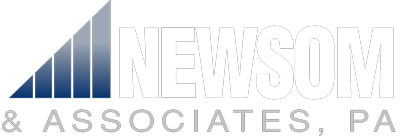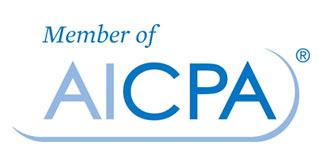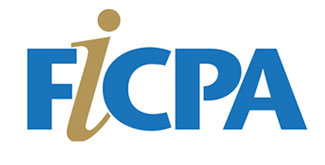As the year draws to a close, it is important that we meet to calculate your business’s tax liability for 2017 so we can determine if additional actions are needed to reduce that liability. In addition, we need to ensure that enough estimated taxes have been paid to avoid any underpayment of estimated tax penalties.
If you’ve been following the news out of Washington, you probably know that corporate tax reform is a real possibility, as is the passage of new tax breaks that would reduce tax rates on income generated by some pass-through businesses. The details of these proposals and whether they’ll ultimately pass Congress are still up in the air. So, in analyzing how we may reduce your 2017 tax burden, we should start with what we do know and how it may affect you, and avoid putting too much weight on proposed changes.
Other than a tax act providing relief to hurricane victims, no significant tax legislation was enacted in 2017. However, big changes will take effect for partnerships beginning in 2018. Effective for partnership tax years beginning after 2017, the current partnership audit procedures will be replaced with a single centralized audit system. While some partnerships may elect out of the new regime, most partnerships will be subject to the new rules. Under the new system, the IRS will examine a partnership’s items of income, gain, loss, deduction, credit and partners’ distributive shares for a particular year of the partnership (i.e., the reviewed year). Any adjustments will be taken into account by the partnership, and not the individual partners, in the year that the audit or any judicial review is completed (i.e., the adjustment year). Thus, it’s possible for current year partners to be liable for mistakes or errors committed in prior years when they were not partners. The new rules provide certain exceptions to allow current year partners to escape such liability, including an election that must be made no later than 45 days after the date of a notice of final partnership adjustment. If you are in a partnership, it’s imperative to have the partnership agreement reviewed and revised, if necessary, to take into account these new rules.
In October, there was a big development which will impact tax planning for family owned businesses. The IRS withdrew proposed regulations that would have imposed major restrictions on valuation discounts for transfers of interests in such businesses among family members. Also in October, the IRS announced that it is considering revoking proposed and temporary regulations governing how liabilities are allocated for purposes of the partnership disguised sale rules. As issued, those regulations could significantly impact the tax treatment of many partnership formations because they apply the rules relating to nonrecourse liabilities to formations of partnerships involving recourse liabilities. Many felt this rule was issued without adequate consideration of its impact. Other recently issued regulations which the IRS has identified as being subject to revocation or substantial revision include (1) the documentation requirements in final and temporary regulations relating to the determination of whether an instrument is debt or equity; and (2) temporary regulations amending the rules relating to transfers of property by C corporations to real estate investment trusts and regulated investment companies. Some say those rules cause too much gain to be recognized.
In addition, the Treasury Department also indicated that it could repeal up to 200 regulations, but did not identify which rules it was talking about. We will keep you abreast of any developments in these areas as they occur.
The following are some year-end strategies we should review with respect to your business.
Section 179 Expensing and Bonus Depreciation
If you are looking to reduce your business’s taxable income, two of the biggest deductions from which your business may benefit are the Code Sec. 179 expense deduction and bonus depreciation. For 2017, the maximum amount of qualifying property that your business can expense is $510,000. That amount is reduced one-for-one to the extent qualifying property purchased during the year exceeds $2,030,000.
In addition, a bonus depreciation deduction is available which allows a business to claim a 50-percent additional first-year depreciation deduction on qualified property placed in service in 2017. Next year, the bonus depreciation percentage goes down to 40 percent, so if you are looking to maximize deductions in 2017, bonus depreciation is a big consideration. Thus, for example, if your business purchases $800,000 of qualifying equipment in 2017, the total first year deduction would be $684,000 ($800,000 – $510,000 (maximum Code Sec. 179 deduction) – $145,000 (50% depreciation x remaining basis of $290,000) – $29,000 (normal depreciation of 20% x remaining basis of $145,000)).
Vehicle-Related Deductions and Substantiation of Deductions
Expenses relating to business vehicles can add up to major deductions. If your business could use a large passenger vehicle, consider purchasing a sport utility vehicle weighing more than 6,000 pounds. Vehicles under that weight limit are considered listed property and deductions are more limited. However, if the vehicle is more than 6,000 pounds, up to $25,000 of the cost of the vehicle can be immediately expensed.
Vehicle expense deductions are generally calculated using one of two methods: the standard mileage rate method or the actual expense method. If the standard mileage rate is used, parking fees and tolls incurred for business purposes can be added to the total amount calculated.
Since the IRS tends to focus on vehicle expenses in an audit and disallow them if they are not property substantiated, you should ensure that the following are part of your business’s tax records with respect to each vehicle used in the business: (1) the amount of each separate expense with respect to the vehicle (e.g., the cost of purchase or lease, the cost of repairs and maintenance); (2) the amount of mileage for each business or investment use and the total miles for the tax period; (3) the date of the expenditure; and (4) the business purpose for the expenditure. The following are considered adequate for substantiating such expenses: (1) records such as a notebook, diary, log, statement of expense, or trip sheets; and (2) documentary evidence such as receipts, canceled checks, bills, or similar evidence. Records are considered adequate to substantiate the element of a vehicle expense only if they are prepared or maintained in such a manner that each recording of an element of the expense is made at or near the time the expense is incurred.
Retirement Plans and Other Fringe Benefits
Benefits are very attractive to employees. If you haven’t done so already, you may want to consider using benefits rather than higher wages to attract employees. While your business is not required to have a retirement plan, there are many advantages to having one. By starting a retirement savings plan, you not only help your employees save for the future, you can also use such a plan to attract and retain qualified employees. Retaining employees longer can impact your bottom line as well by reducing training costs. In addition, as a business owner, you can take advantage of the plan yourself, and so can your spouse. If your spouse is not currently on the payroll, you may want to consider adding him or her and paying a salary up to the maximum amount that can be deferred into a retirement plan. So, for example, if your spouse is 50 years old or over and receives a salary of $24,000, all of it could go into a 401(k), leaving your spouse with a retirement account but no taxable income.
By offering a retirement plan, you also generate tax savings to your business because employer contributions are deductible and the assets in the retirement plan grow tax free. Additionally, a tax credit is available to certain small employers for the costs of starting a retirement plan. Please let me know if this is an option you would like to discuss further.
Increasing Basis in Pass-thru Entities
If you are a partner in a partnership or a shareholder in an S corporation, and the entity is passing through a loss for the year, you must have enough basis in the entity in order to deduct the loss on your personal tax return. If you don’t, and if you can afford to, you should consider increasing your basis in the entity in order to take the loss in 2017.
De Minimis Safe Harbor Election
It may be advantageous to elect the annual de minimis safe harbor election for amounts paid to acquire or produce tangible property. By making this election, and as long as the items purchased don’t have to be capitalized under the uniform capitalization rules and are expensed for financial accounting purposes or in your books and records, you can deduct up to $2,500 per invoice or item (or up to $5,000 if you have an applicable financial statement).
S Corporation Shareholder Salaries
For any business operating as an S corporation, it’s important to ensure that shareholders involved in running the business are paid an amount that is commensurate with their workload. The IRS scrutinizes S corporations which distribute profits instead of paying compensation subject to employment taxes. Failing to pay arm’s length salaries can lead not only to tax deficiencies, but penalties and interest on those deficiencies as well. The key to establishing reasonable compensation is being able to show that the compensation paid for the type of work an owner-employee does for the S corporation is similar to what other corporations would pay for similar work. If you are in this situation, we need to document the factors that support the salary you are being paid.
Tax Reform
As I mentioned before, Congress is attempting to tackle tax reform. There are several ideas floating around and it’s unclear when any tax legislation would be effective if it does eventually pass. Some of the proposals being discussed are a reduction in the corporate tax rate to 20 percent and a establishing a new 25 percent top tax rate for business entity pass-through income (i.e., business income from partnerships, LLCs, S corporations, and Schedule C companies) These rate reductions are proposed to be offset by the repeal of various tax breaks, only a couple of which have been named.
I’m hesitant to speculate what the end result will be, or to make plans based on proposed changes that may or may not become law. That said, the potential for sharp rate reductions for some businesses is not something we should ignore. In some cases, it may create an additional incentive to accelerate deductions into the current year and/or defer income into next year. That’s something we can discuss when we meet.
Please call me at your convenience so we can set up an appointment and discuss your business’s tax situation before year end.


